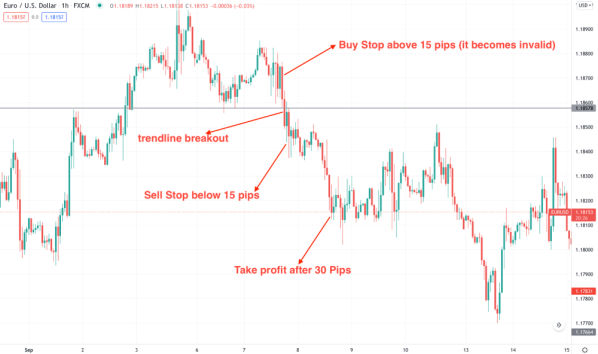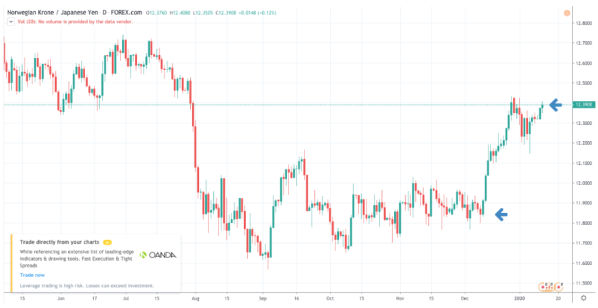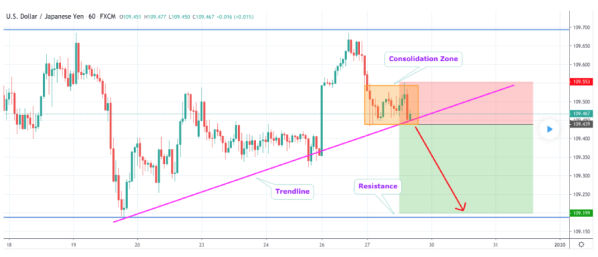
Investors of all stripes use hedging to safeguard their positions from adverse market movements. Many times hedging involves creating another position with an opposite correlation from the original asset, which implies that if the first asset loses value and the second position rises, it compensates for that loss.
Investors may use a second currency pair to protect an existing position that they are reluctant to end in forex trading. When used to protect profits while minimizing risk, hedging is an effective approach in forex trading.
Check out the WikiFX app on desktop and mobile for more educational news. (www.wikifx.com/en/)

The Fundamentals of Forex Hedging
Hedging one currency pair against the possibility of a change in another currency pair is known as forex hedging. Price fluctuations in these two locations, assuming they are of the same magnitude and moving in opposite directions, may cancel each other out while they are both open.
This limits the profit potential but also minimizes the risk of a loss.
For example, traders might hedge their positions by taking a buy and sell position on the same currency pair to safeguard their profits or prevent further losses. Trading techniques that make use of the already-existing links between two currency pairings might be more complex.
Forex Hedge Funds and How They Work
There are a few steps involved in constructing an FX hedge. It starts with an open position, generally a long position, in which your initial transaction predicts a move in a certain direction. If the currency pair moves against your expectations, you may keep your first transaction open without incurring losses by establishing a trade in the other direction.
It is common practice to use this hedging to safeguard current earnings. Hedge options are shown in the NOK/JPY chart shown below. If, for example, they took a long position at the low point of that chart and benefitted from the big profits that followed, the trader may elect to hedge against any prospective losses by taking a short position.

Although the trader may choose to close their position and cash out their profits, they may want to keep their open position open to monitor the chart patterns and technical indicators.
While the trader is still in the position, hedging may be used to balance any potential profits or losses that may occur. A price drop will not affect their ability to pay back the earnings they generated during its early spike.
Forex Hedging Advantages
Hedging in the forex market, like hedging in the stock market, comes with a slew of important features that let experienced traders maintain their accounts while also opening positions.
These benefits include:
-
You have more say over your risk/reward ratio. A hedge offers a vital counterweight to your other holdings and may give ballast in the form of price gains even when your other investments are moving in the other way.
-
By doing this, you increase the variety of your assets. With hedging, you spread out your open positions to reduce the risk of a single occurrence causing you to lose money on every single one of them.
-
It serves as a hedge against unexpected price movements. If there are volatility or unexpected price movements, your hedged position may help maintain the total value of your account and provide a return on that position, stabilizing your account balance until other holdings improve in value.
Potential Drawbacks of Forex Hedging
While hedging may be a highly profitable technique, it also carries a substantial risk and can cancel out gains and profits if used incorrectly.
Hedging may have the following drawbacks:
-
Almost without exception, your earning potential will be reduced as a result. Hedging reduces risk, but it also reduces the return. This is because the value of your hedged position is likely to decrease if profits from your initial open bets continue to rise.
-
You may not be able to profit from hedging if you lack the necessary expertise. Due to the difficulties of designing and timing hedges, many new forex traders lack the market experience and competence to maximize their returns.
In the case of unexpected volatility, your hedge may potentially lose money. While it is not a regular occurrence, hedges—particularly complicated hedges that are not directly tied to your other holdings—are not necessarily guaranteed to increase in value while other positions decline. It is impossible to completely understand the impact that volatility has on your hedged position since the reasons and events that lead to these price changes are unknown. This might result in much bigger losses than if you hadn't hedged your investment at all.
Forex Complex Hedges
Because sophisticated hedges are not straight hedges, they need a bit more trading knowledge to implement well. Opening positions in two currency pairs with associated price fluctuations is one strategy.
A correlation matrix may be used by traders to find currency pairings that have a significant negative correlation, which means that when one pair rises in price, the other falls.
Because of their substantial negative correlation, USD/CHF and EUR/USD combos, for example, are excellent hedging alternatives. Traders may hedge their USD bets by initiating a buy position on USD/CHF and a short one on EUR/USD.
Trading with FX options also presents hedging possibilities, which may be useful in certain situations. It requires a skilled trader to spot these short windows of opportunity when complicated hedges may assist maximize earnings while reducing risk.
When Should You Consider Hedging?
With hedges, you can keep a pair open while reducing some of the associated risks.
A short-term hedge may be a great way to protect profits when certain factors that might have a substantial impact on the price of a stock are unknown. An asset may be overbought or currency pairs may collapse in value because of political or economic turmoil—especially if you've opened a long position on these currencies.
A period of consolidation is developing breakout potential in the USD/JPY chart below, which might go either way. If you already have a position in this currency pair and are hoping that the price decrease breaks through the resistance line, you may want to try hedging with another position, aiming for a recovery from the trend line back up toward prior highs.

If you start this hedge and the price breaks through the trend line, you can always cancel your second trade and keep profiting from your success short. However, if you are incorrect and the trend reverses, you may cancel both trades and still pay out your profits from the prior price move.
Hedge funds are often used by traders to guard against the short-term volatility of economic news releases or market gaps during weekends. Traders should remember that although hedging decreases trading risk, it also diminishes possible earnings.
Because of the modest returns generated by hedging, this technique is best suited for traders who work the forex market full-time or have a large enough account to earn huge monetary gains via limited-percentage profits.
Leaving a Hedge
Only the second position must be closed if you want to exit a direct or convoluted hedge while leaving your initial trade open. You'll want to close out both ends of a hedge at the same time to limit the risk of a gap.
Keep track of your hedged positions so that you can close them out at the right time to complete the strategy's implementation. Overlooking one open position in the process might derail your whole hedging strategy—and possibly result in significant losses to your trading account.
Potential Hedging Risks
Although forex hedging is often used to reduce the risk for traders, improper implementation of this method may be fatal for your trading account.
Even experienced forex traders cannot be guaranteed that their hedging strategy will protect them from possible losses because of the intricacies of forex hedging. Even with a well-designed hedge, both parties may incur losses. Commissions and swaps should be carefully evaluated as well.
Traders should avoid sophisticated hedging techniques unless they have a firm grasp on market swings and how to time deals to profit from price volatility. Poor timing and difficult matching choices might result in large losses in a short period of time.
Experienced traders may utilize their understanding of market swings, the variables influencing these price changes, and a good familiarity with the forex correlation matrix to safeguard their gains and continue to generate money by using timely forex hedges.
The WikiFX App is available for free download on the App Store and Google Play Store.

Leave a Reply